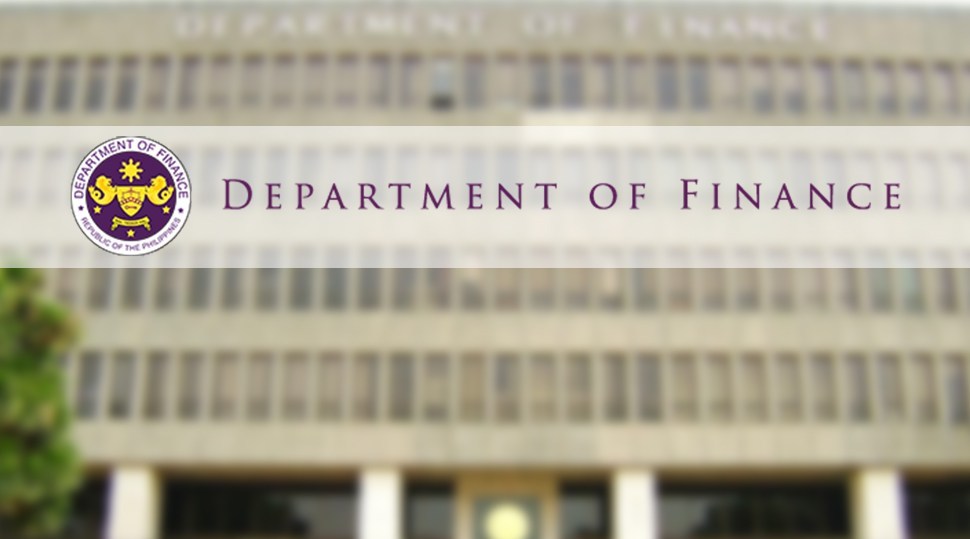DOF to next PH president: Keep infrastructure spending a priority
By Ben O. de Vera | Philippine Daily Inquirer | March 21, 2022 11:16AM

Dept. of Finance (File Photo)
MANILA, Philippines – Infrastructure spending must remain a priority for the next President despite the need for fiscal consolidation or narrowing of the record debt and budget deficit wrought by bigger expenditures but weaker revenues amid the prolonged COVID-19 pandemic, the Department of Finance (DOF) said.
“In the medium-term, there is a need to bring down the debt-to-gross domestic product (GDP) ratio through fiscal consolidation (by narrowing the deficit) so that the Philippine economy can resume its vibrant growth,” said the DOF’s chief economist, former undersecretary Gil Beltran, in an economic bulletin on Saturday.
President Duterte’s economic team led by the DOF will turn over to the next administration a fiscal consolidation plan, which may include new or higher taxes, spending cuts on non-priority sectors, and economic growth drivers to revert the budget deficit to pre-pandemic levels of about 3 percent of GDP while repaying debts.
Finance Secretary Carlos Dominguez III had said that this year will be “critical” to jump-start fiscal consolidation.
For Beltran, “it is important that infrastructure investments be continued” as “cutting infrastructure spending may narrow down the deficit momentarily but will definitely be counter-productive in the long-run as far as economic recovery is concerned.”
“While CREATE and liberalization definitely attract investor interest and enthusiasm, infrastructure projects that are left unfinished do not inspire investor confidence. Simply put, a half-finished bridge does not cut travel time even by a minute. Infrastructure projects have to be fully completed before they can increase the country’s productive capacity and enhance its growth potential,” Beltran said, referring to the Corporate Recovery and Tax Incentives for Enterprises Act, whose lower tax rates serve not only as relief to pandemic-hit businesses but also a lure to potential elephant-sized investments when coupled with hefty fiscal perks.
“CREATE (cutting corporate income taxes), economic liberalization (amendments to the Retail Trade Liberalization Act, Public Service Act, and Foreign Investments Act), and infrastructure investment should be seen as key ingredients in a cocktail of economic recovery package that is most potent when all ingredients are available,” Beltran said.
Beltran noted that the Development Budget Coordination Committee’s (DBCC) program to narrow the budget deficit from 7.7 percent of GDP this year to 6.1 percent next year and 5.1 percent in 2024 kept a high share of infrastructure spending programmed at 5.9 percent of GDP in 2022, 5.5 percent in 2023, and 5.4 percent in 2024.
The Inquirer had reported that the National Economic and Development Authority (Neda) Board chaired by President Duterte wanted to prioritize productive infrastructure spending to not waste money on non-essential projects.
The Neda board blamed the COVID-19 pandemic for “significantly reducing the national government’s fiscal space” — the health and socioeconomic crises it inflicted jacked up the annual debt-to-GDP ratio to a 16-year high of 60.5 percent and the full-year budget deficit to a record 8.6 percent of GDP in 2021.
“In the next 10-40 years, Neda projects a P41.4-trillion total cost to the present and future society due to foregone consumption, and reduced physical and human capital investment and returns in 2020 alone.
This massive loss is due to stringent quarantine measures and the resulting reduction of productivity from the closure of face-to-face schooling, sicknesses, [and] premature deaths, among others,” the Neda Board said.
The Philippine economy suffered from its worst annual recession in 2020 when GDP shrank by a record 9.6 percent, no thanks to one of the longest and strictest COVID-19 lockdowns in the region.
As such, the Neda board said the government needed to prioritize public investments in human capital — particularly education and health — as well as infrastructure to not only recover from the long-term scarring effect of COVID-19 but also generate “good” jobs and accelerate economic growth.
Source: Inquirer.Net
